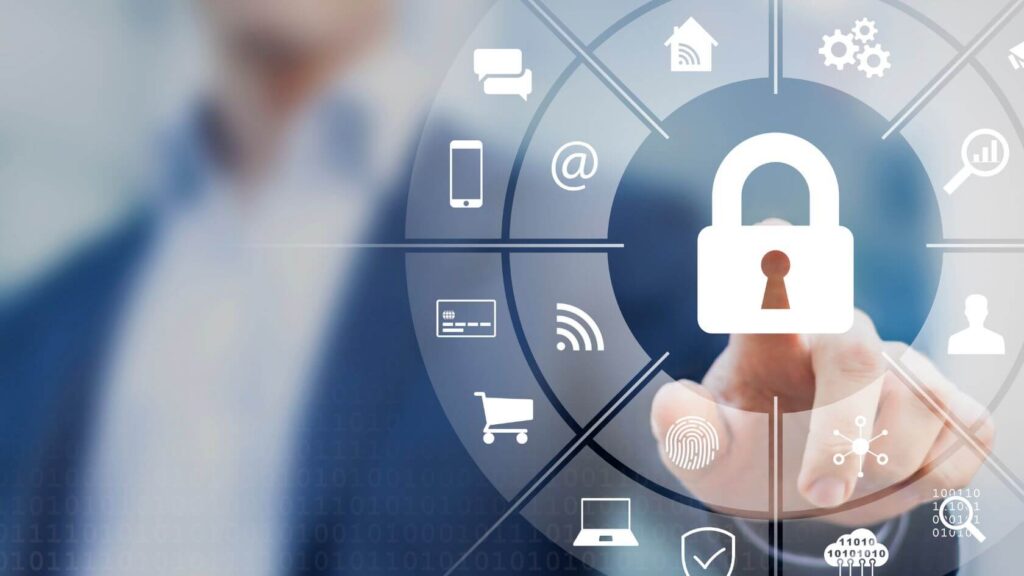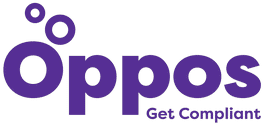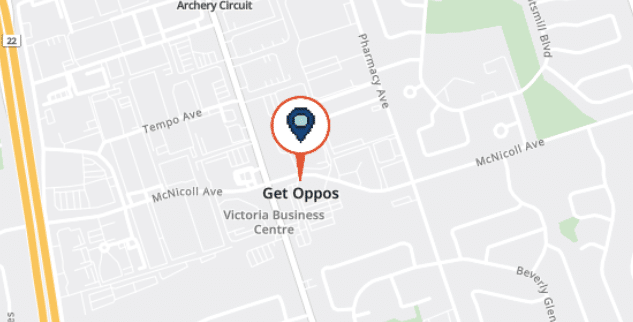Securing customer and client data presents an intricate matrix of challenges for businesses. Information security standards offer a systematic route to navigate these challenges, offering a blueprint for the design and implementation of robust security programs. Yet, an equally complex task is understanding and choosing from the myriad of available information security standards, each with its unique nuances.
SOC 2 Compliance and ISO 27001 are prominent among these standards, widely acknowledged in the industry for their comprehensive coverage. They each have their unique strengths and are applicable depending on various factors such as the organisation’s size and the industry’s nature. The task at hand is to distil these complexities into easily understandable concepts to assist in the decision-making process for small to medium-sized organizations seeking cybersecurity consultation and compliance services.
This article intends to delve into the core features of each standard, throwing light on their operation and offering insights that can aid your decision on which standard aligns best with your business. This involves exploring key components such as their approach to information security management system, operating effectiveness, trust services criteria, design and operational effectiveness, and ways to maintain compliance.
By understanding how each standard relates to your unique business context – from tech providers to retail, financial, and healthcare sectors – you’ll be better equipped to enhance your security posture, meet regulatory compliance, and ensure business continuity in an increasingly interconnected world.

Understanding Information Security Standards
Information security standards are the compass guiding organizations in safeguarding their data and systems from unauthorized access and misuse. They outline the roadmap for implementing security controls and measures crucial to protecting vital information.The Purpose of Standards
Information security standards are important for any organization that wants to protect its data and systems from unauthorized access or misuse. These standards provide guidance on how to implement security controls and measures to safeguard information. They also help ensure that the organization’s security practices are consistently applied and updated to keep pace with changes in technology and the threat landscape. There are many different information security standards. However, all of these standards share the same goal: to protect information and systems from unauthorized access or misuse. Organizations should implement security standards that are appropriate for their specific needs and risks. However, all organizations should at least adopt the basic security measures outlined in these standards to help ensure their information and systems are protected.SOC 2 Compliance: A Closer Look
SOC 2 compliance has become a popular topic in recent years, as more and more companies are looking to ensure that their data is secure. SOC 2 is a set of standards that apply to any company that stores or processes customer data. In order to be SOC 2 compliant, a company must meet a number of strict requirements regarding security, confidentiality, and privacy.
SOC 2 Type 1
SOC 2 Type 1 is a compliance standard used by organizations to ensure the security of their systems. It’s the most common type of SOC 2 compliance and focuses on six key areas: security, availability, processing integrity, confidentiality, and privacy.
SOC 2 Type 1 is a point-in-time assessment, meaning that in order to achieve SOC 2 Type 1 compliance, organizations must put in place adequate security controls and procedures to meet the standard at a specific point in time. They must also pass an independent audit by a qualified third party.
SOC 2 Type 2
SOC 2 Type 2 is extremely similar to SOC 2 Type 1 in terms of what it evaluates, however, it occurs over a period of time rather than a point-in-time assessment. It defines the requirements for service organizations to establish and maintain a secure environment for the processing of customer data. Like Type 1 SOC 2 Type 2 is a voluntary standard, but it is becoming increasingly common for service organizations to undergo a SOC 2 Type 2 audit in order to demonstrate their commitment to security and to provide their customers with peace of mind.
The Process of Achieving SOC 2 Compliance
The process of achieving SOC 2 compliance can be complex and time-consuming, but it is an essential step for businesses that handle sensitive information. SOC 2, or Service Organization Control 2, is an auditing procedure that verifies a company’s systems and controls related to data security, availability, processing integrity, confidentiality, and privacy.
To achieve SOC 2 compliance, businesses must follow a rigorous framework of requirements and prepare for an audit performed by an independent auditor. The process involves conducting a risk assessment, designing and implementing controls, testing the effectiveness of those controls, and preparing documentation to demonstrate compliance.
It is important to note that achieving SOC 2 compliance requires ongoing efforts to maintain controls and continue monitoring risks. Businesses should regularly evaluate their systems and processes to ensure they remain compliant with the SOC 2 framework.
While the process may seem daunting, achieving SOC 2 compliance can provide significant benefits for businesses, including increased trust from customers, improved data security, and a competitive advantage in the marketplace. By working with an experienced auditor and following the established SOC 2 framework, businesses can successfully achieve SOC 2 compliance and demonstrate their commitment to protecting sensitive information.
ISO 27001: An International Standard
ISO 27001 is a globally recognized standard for information security management system (ISMS). It provides a set of guidelines and best practices for managing and protecting sensitive information within any organization, regardless of size, industry, or geographical location. The standard is based on a risk management approach, which requires organizations to identify and assess their information security risks and implement appropriate measures to prevent or mitigate them.
ISO 27001 covers a wide range of topics related to information security, including asset management, access control, cryptography, physical security, and incident management. It also includes requirements for regular reviews and audits, to ensure that the ISMS remains effective and relevant over time.
Implementing an ISO 27001-compliant ISMS can bring numerous benefits to organizations. It can help to protect sensitive information, reduce the risk of data breaches or cyber-attacks, and enhance the organization’s reputation and credibility. It can also improve operational efficiencies, as well as compliance with legal and regulatory requirements.
In conclusion, ISO 27001 is a valuable and essential standard for any organization that wants to manage and protect its sensitive information effectively. By following its guidelines and implementing best practices, organizations can achieve greater security, resilience, and success in today’s constantly evolving business landscape.
The Process of Achieving ISO 27001 Certification
Achieving ISO 27001 certification can be a major milestone for businesses looking to bolster their information security practices. However, the road to certification can be long and arduous, requiring significant effort and investment.
To begin the process of achieving ISO 27001 certification, businesses must first conduct a thorough gap analysis to identify areas where their current information security practices fall short of the standard. From there, they must develop a detailed plan for remediation and improvement, implementing new policies and procedures as necessary.
Next, they must undergo an initial certification audit, during which an independent auditor will evaluate their adherence to the ISO 27001 standard. This audit typically involves a comprehensive review of the business’s information security policies, procedures, and infrastructure, as well as interviews with relevant personnel.
After the initial audit, businesses may need to make further adjustments to their information security practices to address any issues identified during the audit. Once these adjustments are made, the business may undergo a second certification audit to verify their compliance with the standard.
Achieving ISO 27001 certification requires ongoing effort and investment, as businesses must maintain their compliance with the standard over time to retain their certification. This may involve regular audits and assessments, as well as ongoing training and education for staff to ensure ongoing adherence to the standard.
SOC 2 Compliance Vs ISO 27001: Key Differences and Similarities
In the world of information security, SOC 2 compliance and ISO 27001 are two well-known standards that companies strive to achieve. While both are designed to ensure the security of sensitive data, there are some key differences and similarities between the two that are worth exploring.
SOC 2 compliance focuses on the controls that are put in place to protect customer data and other sensitive information. This standard is governed by the American Institute of Certified Public Accountants (AICPA) and is used primarily by service providers that store process, and transmit data on behalf of their clients.
ISO 27001, on the other hand, is a more comprehensive standard that covers all aspects of information security, including physical security, personnel security, and legal compliance. This standard is governed by the International Organization for Standardization (ISO) and is used by companies of all sizes and industries.
While the two standards have some differences, they also share many similarities. Both require regular monitoring and testing of security controls, as well as ongoing risk assessments and comprehensive policies and procedures.
Ultimately, which standard a company chooses to pursue may depend on a variety of factors, including their specific industry, customer requirements, and overall security goals. It’s important for companies to carefully evaluate both standards and determine which one is the best fit for their organization.
Choosing the Right Standard for Your Organization
Choosing the right standard for your organization is a critical decision that can have a significant impact on your business’s success. Standards are established guidelines and specifications that provide organizations with a framework for achieving specific outcomes. The right standard can help your business streamline processes, improve efficiency, increase customer satisfaction, and even win contracts.
There are countless standards available for virtually every industry. From quality management to environmental sustainability to information security, there is no shortage of options. But with so many choices, how do you know which one is right for your organization?
The first step is to identify your organization’s needs and goals. What are the specific outcomes you want to achieve? Once you have a clear understanding of your objectives, you can begin researching the standards that align with those goals. Look for standards that have a proven track record of success and are widely recognized in your industry.
It’s also important to consider the resources required to implement the standard. Some standards may require significant time, money, and expertise to implement, so it’s crucial to evaluate whether your organization has the capacity to undertake such an initiative.
Ultimately, the right standard for your organization is one that aligns with your goals, is widely recognized in your industry, and is feasible to implement. By carefully evaluating your options and selecting the right standard, you can position your organization for success and achieve your desired outcomes.
Oppos ISO 27001 and SOC 2 Assessments
As businesses seek ways to protect their sensitive information, they often struggle to navigate the complexities of different compliance standards. This article has highlighted the differences between SOC 2 compliance and ISO 27001, providing valuable information to help businesses make informed decisions about their security measures. However, theory alone is not enough and it’s important to have professional expertise in order to properly implement and maintain these standards in your business.
Oppos cybersecurity consultants have over a decade of experience helping companies meet and maintain SOC2 and ISO 27001 compliance. We can help organization generate and implement a roadmap to move from their current state to full compliance, for help from one of our consultants reach out to us via the contact form.
Don't wait – secure your data with Oppos' SOC and ISO Certification
SOC and ISO FAQS
SOC 2 is a great alternative to ISO 27001 as they share roughly 96% of the same controls and therefore demonstrate a similar level of assurance of the organization’s security controls and practices.
Yes, there is no limit to the amount of standards that a company be certified in.
ISO 27001 is more of a global standard while SOC 2 is more specific to certain use cases and the united states.
The costs for both can vary depending on the size of the organization and other factors, neither has a huge cost advantage over the other.
Both certifications require annual recertification.






